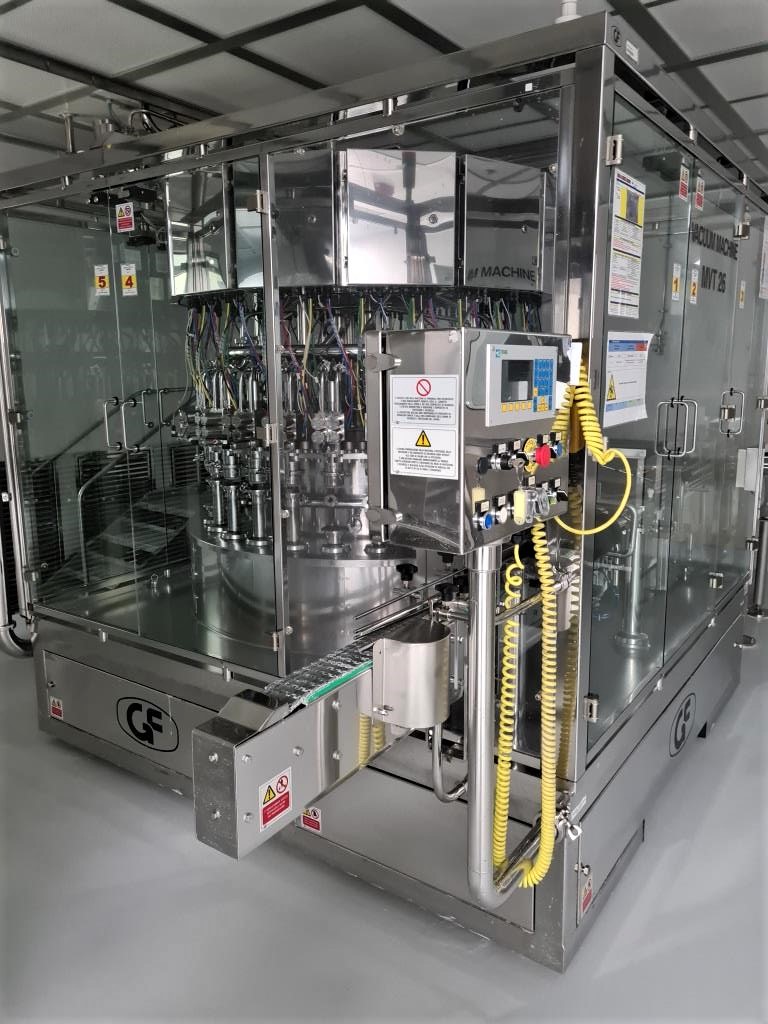GF - Capping Machine - MVT 26

Specifications
| Manufacturer | GF |
| Model | MVT 26 |
| Year | 2006 |
| Condition | Used |
| Serial Number | MLTC-IT-F012 |
| Stock Number | MLTC-0004-WH |
Description
The machine for closing bottles in modified atmosphere and under vacuum has been designed and built according to the most modern and advanced technologies. All the solutions adopted are the result of research and design aimed at the construction of safe, reliable machines capable of guaranteeing high quality and production standards.
The machine was built with high quality components to ensure low maintenance and a long operating life. The pipes, fittings, valves, materials, installed instrumentation comply with the F.D.A.
All the machine parts, the smooth surfaces, the rounded corners have been specially designed for facilitate cleaning and sanitization.
Length mm 4550
Width mm 2310
Net weight Kg 5000
Frequency Hz 50
Voltage Volt 380
Production 9000 Bottles / h (100 ml)
Dim. Used bottles 50 / 100 ml
Material bottles used: glass
Steam consumption 300 Kg / hour
Water consumption 18 lt / min
The bottle capping process is divided into the following phases:
1. Bottles inlet: The containers coming from the line arrive near the machine where an auger prepares them at the machine pitch. The auger leads the bottles into the alveolus of the inlet star where, once they are rotated about 180°, they are deposited on the carousel plates.
2. Capping in modified atmosphere: The inlet star deposits the bottles on the plates, which move the bottle towards the capping head; the bottle capping procedure is divided into the following phases: Bottle lifting, Bottle uncorking, Bottle emptying, Bottle and cap nitrogen, Bottle emptying, Bottle capping, Bottle descent and release.
3. Bottles unloading: The out-feed star receives the bottles from the capping carousel and deposits them after a rotation of about 180° on the out-feed belt, near the ejector.
4. Bottle reject: The reject system is implemented through a system called Soft Push, characterized by the presence of a pad covered with absorbent material and piloted by a pneumatic cylinder. Having received the reject signal from the machine control logic, the pad exits, hits the containers with capping imperfections and moves them towards an independent waste accumulation. On the other way, the suitable bottles will be free to flow towards subsequent processing.












